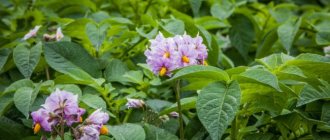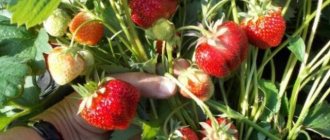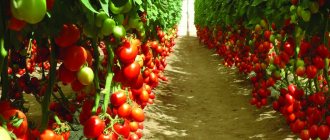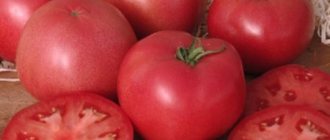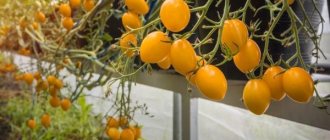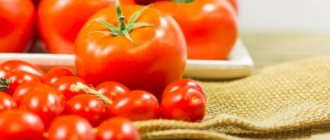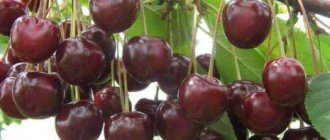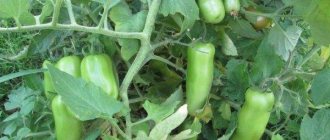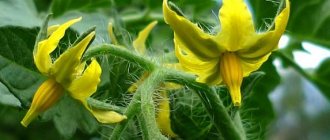Author's rating
Author of the article
Yakov Pavlovich
Professor, Head of the Department of Vegetable Growing
Articles written
153
The global assortment of popular onion varieties is constantly updated, but one position has not lost its relevance for a long time - almost half a century. The Stuttgarter Riesen onion variety remains consistently popular. Every year its seeds (nigella) and sets are actively bought up by vegetable growers. The Stuttgarter Riesen onion is cultivated by large agricultural farms and amateur gardeners.
Selection history and growing regions
The Stuttgarter Riesen onion was bred by German breeders in the last century. The variety is sometimes considered Dutch because that country has a license to produce onion sets. Selection success has spread widely across different countries, but not everyone is able to reproduce the name without errors, so sometimes it is passed on as Stuttgarter Riesen or Stuttgarten Riesen. There is also a translated name - Stuttgart Giant (Giant from Stuttgart).
The German city of Stuttgart is located in a continental climate zone, contrasting in nature. The genes of onions originating from this area contain the highest ecological plasticity - the ability to develop in different conditions. In 1981, the Stuttgarter Riesen onion was accepted for varietal testing in Russia. Since 1995, it has been included in the Russian State Register (as Stuttgarter Riesen) and is recommended for cultivation in four regions: Central, Volga-Vyatka, Middle Volga and Eastern Siberia. The real geography is much wider. The Stutagrer Risen bow is in demand in many Russian regions and in the Near Abroad.
Sowing seeds
To speed up the emergence of seedlings, the seeds are soaked in water for a day before planting. They begin to sow in April, when the earth warms up a little. In the prepared beds, furrows are made about 2 centimeters deep at a distance of 15-17 centimeters.
To make it more convenient to control the consumption and location of seeds, they are dusted with chalk and sown 1-1.5 centimeters from each other. Sprinkle the top with earth or peat and compact it slightly so that the rains do not wash away the crops. Do not water to avoid the formation of a crust that prevents the emergence of seedlings.
When the first shoots turn green, the plantings are thinned out.
Description and characteristics of the variety
Stuttgarter Riesen is a non-hybrid variety with stable characteristics.
Purpose
The main purpose of the Stuttgarter Riesen variety is to produce onions in a two-year culture (from sets), for storage and consumption until the end of spring. You can also grow it for greenery, but single-bud bulbs produce a feather that is not too lush (there are varieties that are more productive for greenery).
It is possible to obtain bulbs in one year - by direct sowing in the ground or by a more reliable seedling method. But they grow rather small, although they are stored well in winter.
INTERESTING! For annual crops, there are specialized, much more productive varieties.
Time of ripening
The Stuttgarter Riesen variety is early ripening. The turnip is ready for harvesting 66-73 (occasionally up to 85) days from the beginning of the growing season. The heads have time to form and ripen even in regions with a short period of summer heat. The feather grows at an average speed.
Bulbs
The turnip is single-primed (the feather comes out from one point), formed one at a time in a nest. The Stuttgarter Riesen variety does not have a tendency towards “nepotism”, and this works for large fruit.
Main parameters:
- the average weight of a turnip during industrial cultivation is determined in the range of 48-94 g;
- the mass of the bulb in private gardens is 120-150 g;
- Stuttgarter's shape is onion (flattened at the top and bottom) or rounded-flat;
- the color of the integumentary scales is golden-brown;
- the fit of the husk is tight;
- inner scales white;
- the consistency is strong, without looseness;
- the taste is sharp, the juiciness is average.
Expert opinion
Stanislav Pavlovich
Gardener with 17 years of experience and our expert
Ask a Question
INTERESTING! The flattened shape of the bulb and the depression in the “neck” area cause moisture retention. This is a provoking factor for the development of rot.
Sustainability
The Stuttgarter Riesen onion, being a rather old variety, does not have genetic resistance to downy mildew (downy mildew), neck rot, or onion fly damage. If plantings are attacked by diseases and pests, they can cause depletion or death of plants, significantly reduce productivity, and impair shelf life.
Turnip yield
The industrial productivity of Stuttgarter Riesen onions is from 100 to 350 kg per hundred square meters. This figure is higher than that of the Strigunovsky local variety (the difference can reach 70 kg per hundred square meters, under equal growing conditions). In private gardens, Stuttgarter's yield reaches 8 kg/sq.m. m (800 kg per hundred square meters).
Safety
At harvest in Stuttgarter, only half of the bulbs fully ripen (up to 55%). But the rest ripen successfully after harvesting (if they are not affected by diseases) - up to 96%. Ripened onion and Stuttgarter Riesen sets are perfectly stored until the end of spring.
INTERESTING! Being deeply dormant in winter, the bulbs are able to wake up under the influence of moisture and heat - for successful forcing of greenery.
Description of the variety
Stuttgarter Riesen is characterized by medium ripening periods. Mature heads have a round, slightly flattened shape, covered with a dense husk with a slight gloss. The color of ripe bulbs varies from beige to yellow-orange, sometimes with a brown tint. The average weight of one head is from 90 to 160 g. In rich soils with abundant watering, the weight of the bulbs reaches 250 g.
The tight fit of the scales inside the head ensures high shelf life, thanks to which it is well stored and does not lose freshness for a long time. The feather is long, dense and juicy, has a beautiful rich dark green color and excellent taste.
Stuttgarter Riesen is relatively easy to care for and adapts well to the weather conditions of different regions of Russia. Growing it during cold weather in greenhouses for greens is also very popular and profitable. Depending on the climate, the ripening time of the vegetable will vary slightly.
Thanks to its excellent varietal qualities and simple agricultural technology, the variety has gained well-deserved popularity. It is widespread not only in Russia, but throughout the world. The Stuttgarter Riesen bow is different:
- yield up to 8.5 kg per 1 sq. m;
- attractive presentation;
- wonderful taste;
- high content of vitamins C, B1, B2, B6, PP, E;
- long shelf life;
- sufficient frost resistance;
- resistance to common diseases.
The Stuttgarter Riesen onion variety is well suited for preparing various dishes, canning, drying and freezing. When fresh, it has a classic pungent taste and spicy aroma, which are indispensable in Russian cuisine.
Table: pros and cons of the Stuttgarter Riesen variety
| Advantages | Flaws |
| ecological plasticity (all regions) | strong susceptibility to peronosporosis |
| long-term stability of the genotype | <instability to neck rot |
| availability of planting material | susceptibility to onion fly |
| reasonable cost of onion sets | "pit" at the top of the bulb |
| precocity | quite thick neck |
| universal purpose (turnip, feather) | the need for ripening for storage |
| good yield | bitter-spicy taste |
| decent bulb weight | onions are difficult to peel from scales |
| excellent keeping quality (until spring) | low yield of feathers for “green stuff” |
| lots of vitamin C | low efficiency in annual culture |
| you can get your own seeds (not a hybrid) |
See also: The subtleties of growing and caring for Schnitt onions
Description of the Stuttgarter Riesen bow
Stuttgarter Riesen is a variety characterized by high yield and versatility of use. It is used to prepare fresh salads, a variety of dishes, and canned food for the winter. Due to the dry matter content, long-term storage in dried or frozen form is possible. Forcing allows you to get healthy young greens.
This is an excellent remedy in the fight against colds thanks to vitamin C, the main element of onions.
Onion sets Stuttgarter Riesen: description
Medium or large onions are round in shape with slightly flattened ends. When ripe, the scales acquire a straw-yellow or golden-brown hue. The taste is pleasant, medium spicy, the smell is strong.
Planting dates and patterns
The best predecessors of onions in crop rotation are cabbage, cucumbers, zucchini, beans, peas, root vegetables, green manure, and strawberries. It is permissible to plant onions after potatoes, peppers, and tomatoes. Onion plantings are located in well-lit areas.
A bed for Stuttgarter Riesen onions is prepared in the fall, filling it with a bucket of humus and a glass of ash for each square meter before digging. If the acidity of the soil is high, then it is advisable to carry out deacidification for the previous crop. In the spring, 4-6 days before planting onions, the beds are watered with a biofungicide solution (Trichophyte, Trichocin, Trichoderma Veride, Sporobacterin, Fitosporin).
From seeds
Stuttgarter Riesen is planted with seeds (nigella) to produce onion sets. Commercial vegetable turnips, as a rule, do not grow in one season: the diameter of the bulbs rarely exceeds 3 cm.
Expert opinion
Stanislav Pavlovich
Gardener with 17 years of experience and our expert
Ask a Question
INTERESTING! Onion seeds are also sown for their delicate, vitamin-rich greens, but the feather of the Stuttgarter variety will not grow large enough. There are special varieties from the “Onion for greens” series.
It is advisable to sow in the ground as early as possible in order to fully utilize the spring soil moisture. It is important to grow strong greens before possible outbreaks of downy mildew and onion fly activity. In the Middle Zone, the North-West, Siberia and the Urals, onions can be sown as soon as the snow melts - from about mid-April. Sowing nigella for seeding is possible until the end of May, and to obtain green feathers - until August. In the southern regions, earlier dates are practiced.
Before sowing, nigella is treated with a biofungicide solution (Fitosporin, Sporobacterin) to prevent disease. Onion seeds are slow to germinate, so it is useful to soak them in a germination stimulator (for example, Zircon).
The surface of the ridge is carefully leveled. The rows are carried out in moist soil, every 10-15 cm. Nigella is sown densely, using up to 12 g of seeds per 1 square meter. m. Sometimes a spot sowing pattern of 8X1.5 cm is maintained.
Stuttgarter seeds are planted to a depth of 10-20 mm. The bed is lightly rolled or patted down on top, then mulched (with light compost, deoxidized peat) with a layer of up to 1.5 cm.
Pre-winter sowing of the Stuttgarter Riesen variety is also possible.
From seedlings
Special varieties have been bred for seedling cultivation of onion turnips, and Stuttgarter Riesen does not belong to this group. But this option is quite possible for him.
Nigella is sown for seedlings at home on March 10-20. The soil should be as loose as possible (such as “For cacti and succulents”), with the addition of sand. Sowing is done in boxes or nurseries about 10 cm high, with drainage holes for moisture drainage. Seeds are placed thicker (up to 1 g per pot with a diameter of 8-10 cm), deepening them by 1 cm. Seedlings need bright light. They are kept at a temperature no higher than +25 degrees during the day and no more than +15 at night. Plants are not afraid of cold weather.
Seedlings are planted in open ground at the age of 55-70 days, after May 15, after hardening off the plants. When transplanting, the tips of the roots and tops of the onion are trimmed. Plants are placed in a bed according to a 15x8 cm pattern, without burial; water carefully. The root system should not be bent when planting.
From onion sets
The variety Stuttgarter Riesen is recommended for spring planting of sets. When planted before winter, there is a risk of stemming (fading into color).
In spring, planting material is heated for 10-15 days on a stove or near a radiator. Before planting, the seedlings are soaked in a biofungicide solution (Sporobacterin, Fitosporin). If the bulbs are infected with thrips, they are disinfected by heating them for 10 minutes in water at a temperature of +45 degrees, then immediately cooling them in cold water.
To obtain turnips, onions of the Stuttgarter Riesen variety are planted outside in April - May, and to collect greens - at any time in spring or summer. It is not recommended to pluck the feathers from plants grown for large bulbs. The layout of the turnip sets is 25x10 cm; They plant much thicker greenery (5x5 cm). The “shoulders” of the bulbs are slightly buried in the soil.
INTERESTING! You can plant onion sets according to a 12x5 cm pattern, and later thin them out, removing half the plants to the green feather.
Growing Stuttgarter Riesen onions from seeds
To obtain a full harvest over the course of one season, vegetable growers use the following proven growing methods:
- Direct spring. The culture is not afraid of a temperature of 5 °C. Sowing seeds in early spring will allow you to get a ripe harvest by the end of the season.
- Podzimny. To prevent the vegetable from sprouting, it is optimal to send the seeds into the ground when the first autumn frosts arrive.
- Growing seedlings in containers. The time for sowing is the second half of February, March. Plants must be provided with additional lighting and all rules of agricultural care must be followed.
To grow Stuttgarter Riesen onions from seeds directly in the ground, dig a bed and cut rows. The distance between them should be 15 cm. Onions are sown pointwise, which will help prevent overspending. To do this, 2-3 seeds are placed in the hole every 10 cm.
Caring for onions in open ground
In the phase of feather growth, onions need regular watering, fertilizing with a predominance of nitrogen, repelling onion flies and treatment with biological products to prevent diseases. When the heads are formed, watering is reduced and then stopped completely.
Watering schedule
Before filling the bulbs, the beds should be constantly moist (in moderation). In the northern regions, the Stuttgarter Riesen onion needs three to four waterings per season, in the central regions - from 4 to 8 times, in the south - up to 15 times. Approximately 3-4 weeks before harvesting (one and a half months after germination), water supply is stopped.
See also the timing of onion harvesting in the Moscow region and in the Moscow region
Expert opinion
Stanislav Pavlovich
Gardener with 17 years of experience and our expert
Ask a Question
IMPORTANT! It is recommended to water the Stuttgarter Riesen variety by flooding (without sprinkling) to protect the feather from an outbreak of peronosporosis.
Loosening the soil and weeding
The plantings must not be overgrown with weeds. Early weeding is especially important for nigella onions and seedlings. Periodic (the day after watering) shallow loosening of row spacing helps conserve moisture.
Feeding
Onions do not like high concentrations of minerals in the soil solution. It is advisable to feed it little by little, giving preference to natural fertilizers - manure, herbal infusion, wood ash. For 1 sq. m distribute 4-5 liters of nutrient fluid.
Fertilizing is given in the first 35-40 days of the growing season, immediately after watering. Alternate the application of manure (diluted with water 1:10) and wood ash infusion (500 g per bucket of water). The manure solution can be replaced with herbal infusion or Urea (1 tbsp per bucket of water), and the ash with phosphorus-potassium fertilizer.
Approximate feeding schedule for Stuttgarter Riesen onions:
- In the growth phase of the 2nd leaf - manure (Urea) + 1 tsp. Magnesium sulfate per bucket of solution.
- A week later - ash.
- In the first ten days of June the cycle is repeated.
Disease and pest control
To prevent diseases, onion plantings are watered weekly and sprayed with biofungicides (Sporobacterin, Baxis, Fitosporin). If the first signs of peronosporosis appear, modern chemical fungicides are used - Revus (waiting period 15 days), Consento (waiting period 21 days). Sometimes folk remedies help to contain the disease (dusting with ash; spraying with serum diluted in water 1:10).
The onion fly flies out at the time of flowering of dandelion and cherry. She lays eggs near the root collar of onion plants. Soon, light-colored larvae (up to 1 cm long) hatch, penetrate into the bulbs and feed there. The foliage withers, the onions rot. To repel onion flies, wormwood tops are laid out between the rows or the ground is sprinkled with tobacco dust. To get rid of worms, water the onion with a salt solution (10 g per 10 liters of water).
Small thrips larvae that feed on onion feathers and leave streak-like marks are destroyed by spraying with the biological preparation Fitoverm.
Basic rules for caring for onion vegetables
Stuttgarter Riesen does not require special care, but certain rules must still be followed.
Watering
Needs constant watering. Drying out and overwatering are equally detrimental to the future harvest.
Overwatering can cause bad taste and rot. If there is no timely watering, the onions will be bitter and tough. It is necessary to water in the morning or evening. During rains, watering stops.
Top dressing
You should feed three times per season:
- 25 days after planting, organic matter is added. Litter or manure works well. Apply up to 8 liters per square.
- Two weeks later, a second feeding with organic matter with the addition of mineral components and phosphorus.
- After three weeks it is necessary to feed with nitrogen. This is approximately the end of June, beginning of July.
Thermal and light conditions
The onion bed is placed in a sunny place. This way the soil will warm up faster and the sprouts will hatch sooner. The harvest in bright places is always larger and better suited for storage.
Do I need to trim?
Attention. Onions should not be trimmed until they are stored. This practice is the most common among gardeners. If you follow the rules for performing this procedure, the heads will be well preserved until late spring.
At home, a common method is to braid it and store it in bulk. In the first case, the tail remains longer, about 10 cm. It is important that it dries well. When storing in boxes, tops are not needed. In general, feathers are absolutely unnecessary when stored and can cause disease and rotting.
Harvest and storage
The ripening of onions of the Stuttgarter Riesen variety occurs 2-2.5 months after the first greenery comes out. The heads are removed in dry weather, when the neck becomes thinner and the feather lies down and begins to dry out. The onion, without cutting off the remaining tops, is laid out in a thin layer for ripening in a warm room (preferably with a temperature of +25 to +30 degrees). After 20 days, the heads are placed in nets or nylon stockings; stored in a suspended state at room temperature; protect from dampness and sudden temperature changes.
IMPORTANT! If possible, the Stuttgarter Riesen variety is kept at a temperature of +42 to +45 degrees for the first 12 hours after harvesting: this will reduce neck rot.
Growing and care
The bushes are regularly watered as needed, preventing the soil from drying out. The water should be at room temperature. The optimal time for watering is evening or early morning.
From the middle of the season, the amount of moisture is reduced. It is recommended to stop watering 10-14 days before harvest to improve the keeping quality of the onion and its taste.
After irrigation or rain, loosen the soil. As the weeds grow, weed them out.
At the beginning of the season, nitrogen supplements from chicken manure, mullein, mineral or nitrogen preparations are required. The first fertilizer is applied 2 weeks after germination. Repeat after another two weeks. A month after the second feeding, preparations with phosphorus, potassium and a small amount of nitrogen are applied. After another 2-3 weeks, they are fed with phosphorus and potassium without nitrogen.
All fertilizer solutions should be weak so as not to overfeed the plants. With excessive feeding, nitrates and other harmful substances will remain in the pulp.
Difficulties in growing
The Stuttgarter Riesen onion is demanding on soil fertility and moisture supply. On uncultivated lands, productivity will be low.
Susceptibility to fungal infections dictates the need for pesticide treatments (traditional methods of protection and biofungicides do not always help with this variety). Because of this, it is difficult to talk about the desired ecological purity of the crop and territory.
Planting sets
It is preferable to grow Stuttgarter Riesen onions from sets.
It is sorted, calibrated, disinfected and warmed up. Before planting, the seeds are soaked in warm water for several hours to speed up the germination process. To begin with, dig up the bed and make grooves about two centimeters deep.
Keeping a gap of 10-12 centimeters between the bulbs, the Stuttgarter Riesen onion sets are planted in rows, placing the grooves at a distance of 20-25 centimeters, sprinkled with earth on top, lightly compacted, and watered.
When planting in autumn, it is better to use small sets, as they often dry out during storage. Also, small-sized sets are suitable for early spring planting; larger bulbs are planted when the soil warms up to 10-15 C°; if planted too early, such plants bolt.
Breeding ways to solve problems
Specialists from the Netherlands (agricultural breeders) have developed an improved version - the non-hybrid variety Stuttgarter-Stanfield (Stanfield), zoned in Russia since 2015 (based on the results of tests in the Central region). It is devoid of many of the disadvantages of the original form, maintaining good performance in terms of yield and bulb size.
Varietal characteristics of Stuttgarter-Stanfield onions:
- three-germ, which means a lush feather;
- thin “neck”;
- resistance to fungal infections;
- completion rate for harvesting – 88%, when ripening – almost 100%;
- the shape is less flat, closer to an ellipse;
- average bulb weight 85-100 g;
- industrial productivity of turnips is from 180 to 380 kg per hundred square meters.
Stuttgarter-Stanfield grows bulbs later (in the middle terms), so it is not a complete replacement for the original early variety. Future tests will show whether the new product will be able to displace the maternal form. The stable genetics of “old”, reliable varieties are not always ready to give up ground even in front of disease-resistant new forms.
Planting a bow on a feather
The Stuttgarter Riesen onion is very suitable for forcing the feather. Knowing this, gardeners often use it to obtain vitamin products.
To do this, take the onion or set left after planting, cut off the top layer or make cuts. The bulbs are planted tightly and left on the surface, lightly sprinkled with soil on top.
Water frequently. When feathers appear, feed them once with urea, dissolving 20 grams of fertilizer in a bucket of water. For speedy growth, plantings are covered with plastic wrap.
Reviews from gardeners
Practicing vegetable growers with extensive experience note that it is profitable to grow Stuttgarter Riesen onions, but only with a high level of agricultural technology. The opportunity to get your own seeds and easy sowing is attractive. This allows you to reduce costs. This eliminates the risk of purchasing low-quality planting material. The variety grows successfully on natural fertilizers – manure and ash, without store-bought “chemicals”. Strict crop rotation and early planting help reduce the risk of fungal disease problems.
Previous
OnionsHow to grow perennial onions from seeds: planting and care rules
Next
OnionsThe onions have turned black and are rotting: causes and measures to combat rot in the garden bed
Diseases and pests
The most common problems in the cultivation and storage of Stuttgarter Riesen onions arise from onion fly, neck rot and downy mildew.
The onion fly lays eggs in the heads, causing their flesh to become damaged and rot. You can fight this pest with:
- treatment with disinfectant solutions;
- sprinkling the soil with ash and tobacco dust;
- alternating beds of onions with carrots, the smell of which repels the pest;
- autumn digging of the soil, as a result of which harmful insects and their larvae freeze out in winter.
Neck rot and powdery mildew are common fungal diseases that affect bulbs during storage. To prevent them, you need to thoroughly dry and sort out the heads before storing them in storage, and also maintain optimal temperature and humidity conditions in the room.
Plants showing signs of disease should be burned to destroy fungal spores. They also practice preventive treatment of planting material with antifungal drugs before the start of the growing cycle.
How to properly store onions
Only fully ripened onions are well preserved. Therefore, unripe or with signs of spoilage are processed and used first.
The sets are stored sprinkled with sand. When storing onions, make sure that condensation does not collect, as this provokes rotting and germination.
Despite the fact that onions are quite cold-resistant, you should not store them in low temperatures.
It may seem that planting Stuttgarter Riesen onions is a rather troublesome process, but in fact it is not at all difficult. By following the basic rules of cultivation, of which there are not many, even an inexperienced gardener can get an excellent harvest of high-quality marketable vegetables.
Spring planting of Stuttgarter Rizzen onions through seedlings
Onions of the Stuttgarter Riesen variety are also grown through seedlings. To do this, Stuttgarter Riesen onion seeds are sown in boxes with fertile soil in early March. By May, the onion will have grown 3-4 feathers and become strong enough to be easily transplanted into open ground.
In order for the seedlings to be strong and produce a rich harvest, you should remember:
- before planting, the seeds are soaked in warm water for a day, changing it 2-3 times during this period;
- The seeds are planted at a distance of 1 cm from each other; if the planting is thickened, then thin out as necessary;
- keep the soil in the boxes moist, overwatering is dangerous due to the onion roots getting wet and causing its further death;
- The seedling boxes are put away in a warm place until the first shoots appear, then they are placed in a bright, cool place (not higher than 16°C).
At the beginning of May, if weather conditions permit, mature seedlings are planted in rows. The distance between the bulbs should be at least 20 cm on all sides. This will allow it to form normally and reach 180-200 g.
